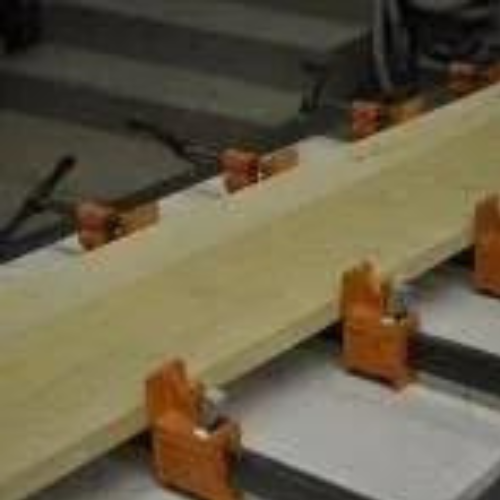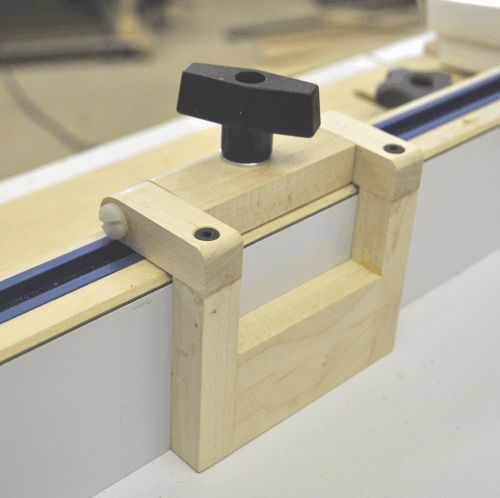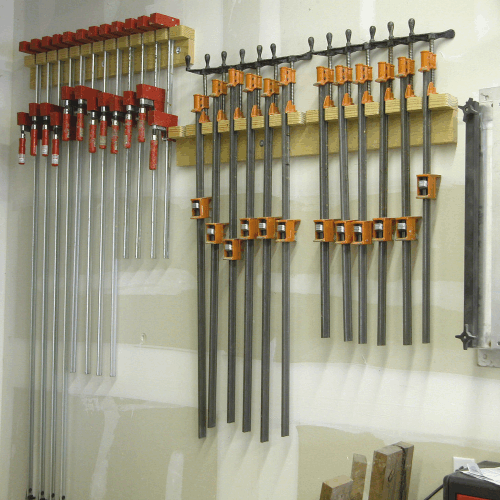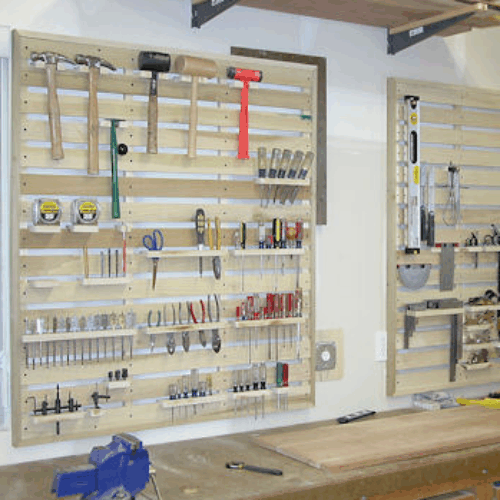If you plan on clamping rough wood stock together, you need to follow a few simple guidelines along with having the right clamps. With regards to the clamps, don’t be fooled by those cheap bar clamps. If you apply much torque, the bar will bend and your clamping job will not produce tight joints. Purchase heavy duty bar clamps like the Jorgenson clamps shown in the picture on the left. You would be hard pressed to apply enough torque to bend the bar and with the twist clamp handles, it is easier to apply significant torque to produce tight glue joints. Once you have the right clamps, run the edges of the boards to be clamped together through a joiner or use a table saw to true up the edges. For stronger joints, cut biscuit slots spaced as desired. Lay your clamps out on a level table or floor and adjust the clamp spacing as well as the clamp openings to fit your project. Apply plenty of glue to both edges of the joint (as well as the biscuit slots if used) and set the boards in the clamps. It is important that the boards sit flat on the bottom of the clamp bar as shown in the picture on the right. To achieve this, start at one end of the clamps and ask a person to stand on the boards over the first clamp. Tighten the clamp sufficiently to hold the boards and then proceed down the line tightening each clamp as the person stands on the boards directly over the clamp being tightened. Turn the clamped piece over to insure there is no space (or very little space) between the boards and the bar. In some cases, you might have to use a c-clamp to pull an uneven board down against the bar. Once you are satisfied the boards are close enough to the bar, tighten each clamp further to insure a tight, solid glue joint. Don’t try to wipe off the glue coming out of the joints. Let it dry and then use a scraper to remove the excess. Wiping it off with a cloth will rub the glue into the wood and make sanding difficult.
-March 8, 2024






